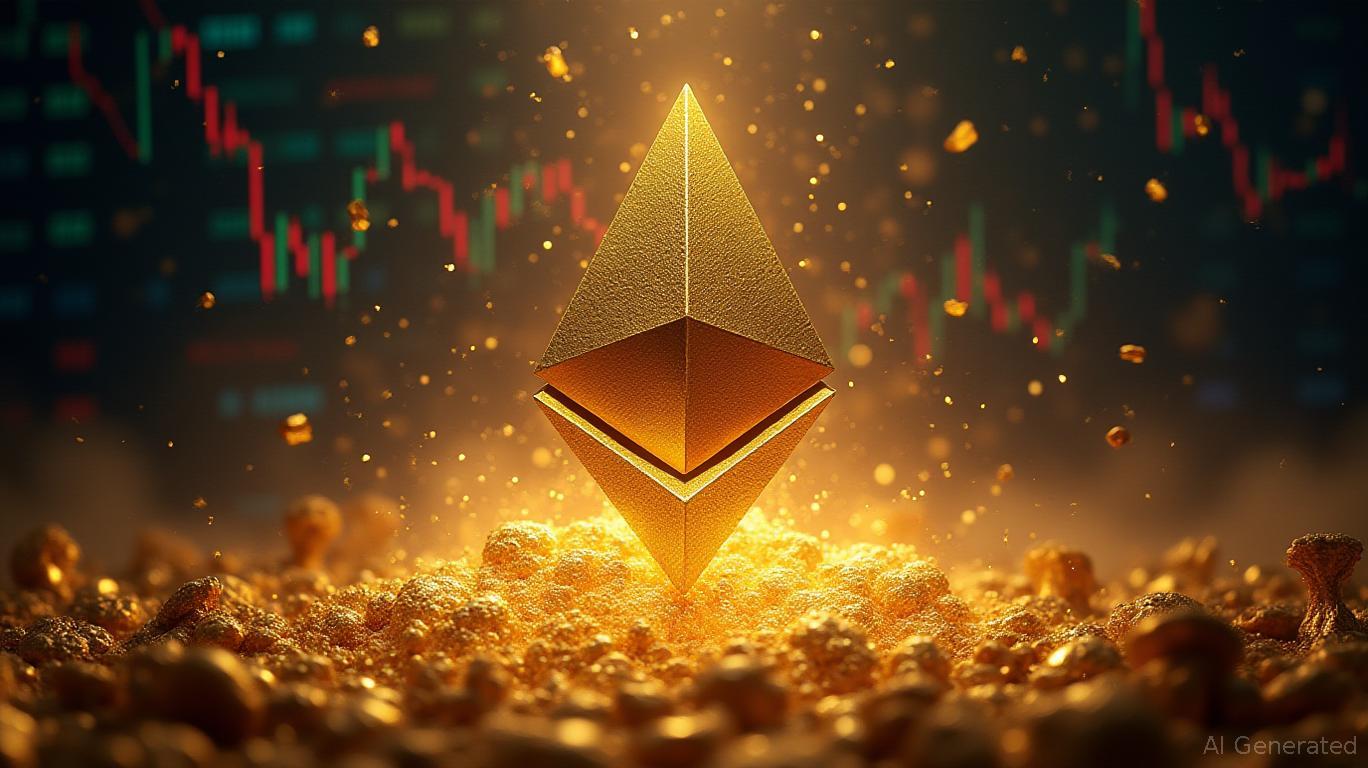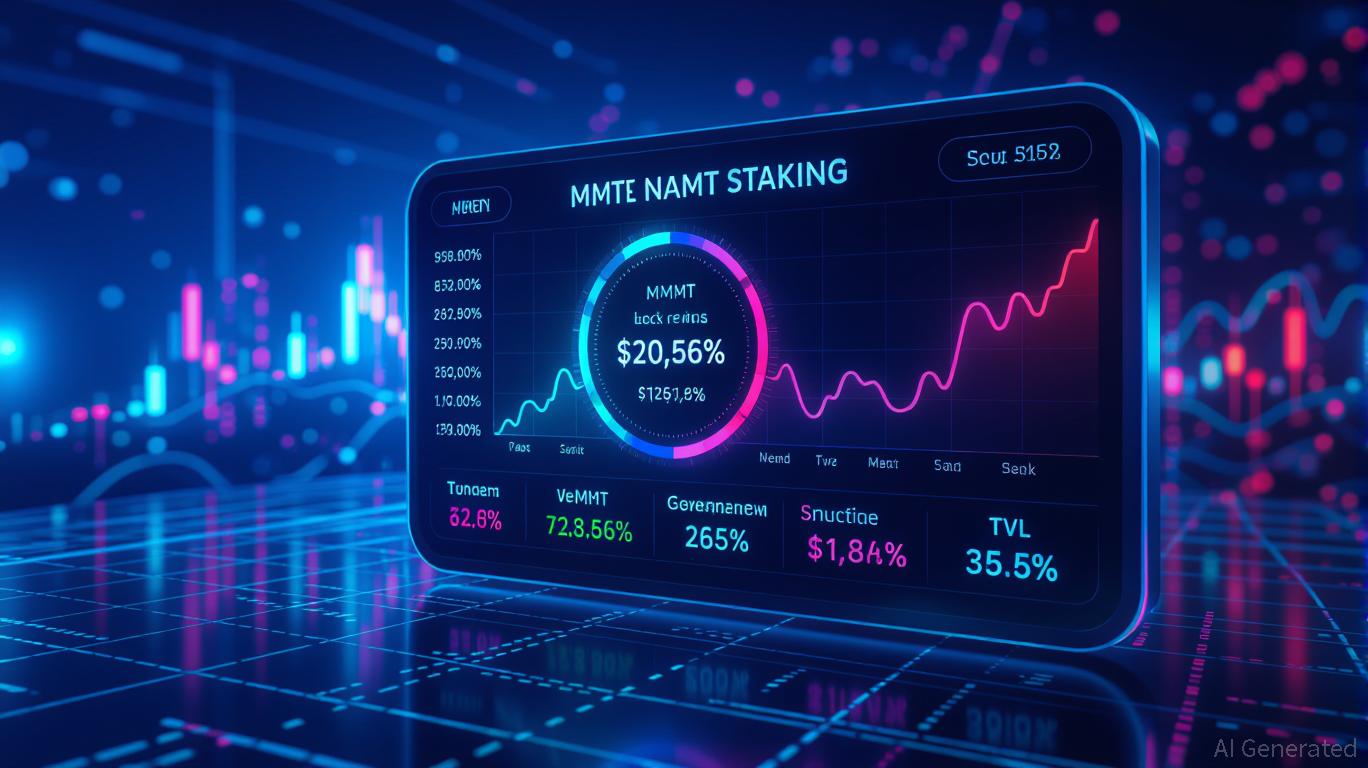Ethereum Updates Today: Institutional Magic: Ethereum’s $13 Billion Reserve Stands Strong Against Market Fluctuations
- Michael Saylor and Tom Lee drive Ethereum's institutional adoption, with BitMine holding 3.34M ETH ($13.2B) as the largest treasury. - BitMine's $113M ETH purchase via Galaxy Digital aims to reach 5% of Ethereum's supply, following a $29.28M buy in November. - Saylor's Strategy Inc. (MSTR) holds 640,808 BTC ($23.2B gains) and predicts $150K Bitcoin by 2025 amid regulatory progress. - Despite 13% Ethereum price drop in October, institutional confidence persists through OTC buying strategies and treasury m
Michael Saylor, the
BitMine’s latest acquisition of $113 million in Ethereum—adding 27,316 ETH—demonstrates this institutional momentum. The purchase, executed through Galaxy Digital’s OTC desk, supports

Even with strong institutional interest, the market remains volatile. Bitcoin’s price dropped 8% in October, wiping out $18.8 billion from the crypto treasury sector’s market value, while Ethereum declined 13% during the same period. Saylor, however, stays positive, recently increasing Strategy’s STRC preferred stock yield to 10.5% to support further Bitcoin acquisitions, as reported by
Lee’s support for Ethereum faces doubt among retail traders, with prediction markets now estimating a 31% probability of ETH reaching $5,000 by 2025, down from 40% in October. Nevertheless, institutional faith remains robust: BitMine’s OTC buying approach minimizes market disruption, and Saylor’s treasury strategy has been adopted by companies like BitMine and Marathon Digital. However, uncertainty around Federal Reserve policy and global tensions present challenges, with Lee cautioning that Bitcoin’s volatility could intensify downturns in traditional markets.
As of November 2, Ethereum was trading at $3,918, a 2.71% decrease over 24 hours, while Strategy’s shares slipped 0.17% in after-hours trading. The balance between institutional buying and broader economic challenges is likely to shape the next stage of cryptocurrency’s integration into the global financial system.
Disclaimer: The content of this article solely reflects the author's opinion and does not represent the platform in any capacity. This article is not intended to serve as a reference for making investment decisions.
You may also like
Bitcoin soars past $105K after Trump’s $2,000 tariff payout promise ignites crypto rally

MMT Token Value Soars: Governance Enhancements and DeFi Drivers in 2025
- MMT token surged in late 2025 due to ve(3,3) governance upgrades and DeFi adoption growth. - Binance's 0.75% genesis airdrop boosted community engagement and institutional validation. - TVL exceeded $600M with 2.1M users, driven by cross-chain integrations and fee-sharing incentives. - Inflationary token unlock risks (79.59% supply over 48 months) balance against Q1 2026 perpetual DEX launch. - Momentum's RWA platform and Sui-Ethereum bridging position it as a DeFi governance hub with sticky capital pote

MMT Token TGE and Its Influence on the Market: Evaluating Practical Use and Adoption Prospects Amid Market Volatility
- MMT token's November 2025 TGE triggered a 1330% price surge and attracted institutional investment. - Listings on Binance/Upbit and $10M funding from Coinbase Ventures amplified liquidity and market credibility. - Speculative trading dominates growth, with TVL at $265M but limited real-world utility beyond DeFi staking. - Phishing risks and reliance on exchange incentives highlight adoption challenges despite institutional backing. - Future viability depends on ve(3,3) DEX launch and RWA integrations to

Decentralized Finance's New Era: Examining TWT's Growth Following Its Addition to Exchanges
- Trust Wallet Token (TWT) shifted from exchange integrations to a loyalty-driven ecosystem via Trust Premium, linking token utility to user engagement tiers (Bronze-Gold). - TWT's price stabilized post-launch, with analysts projecting a $5.13 peak in 2025, driven by cross-chain utility and tiered incentives for long-term holdings. - The model redefines DeFi tokens as functional ecosystem components, prioritizing user retention over speculative trading, aligning with trends like tokenized real-world assets
